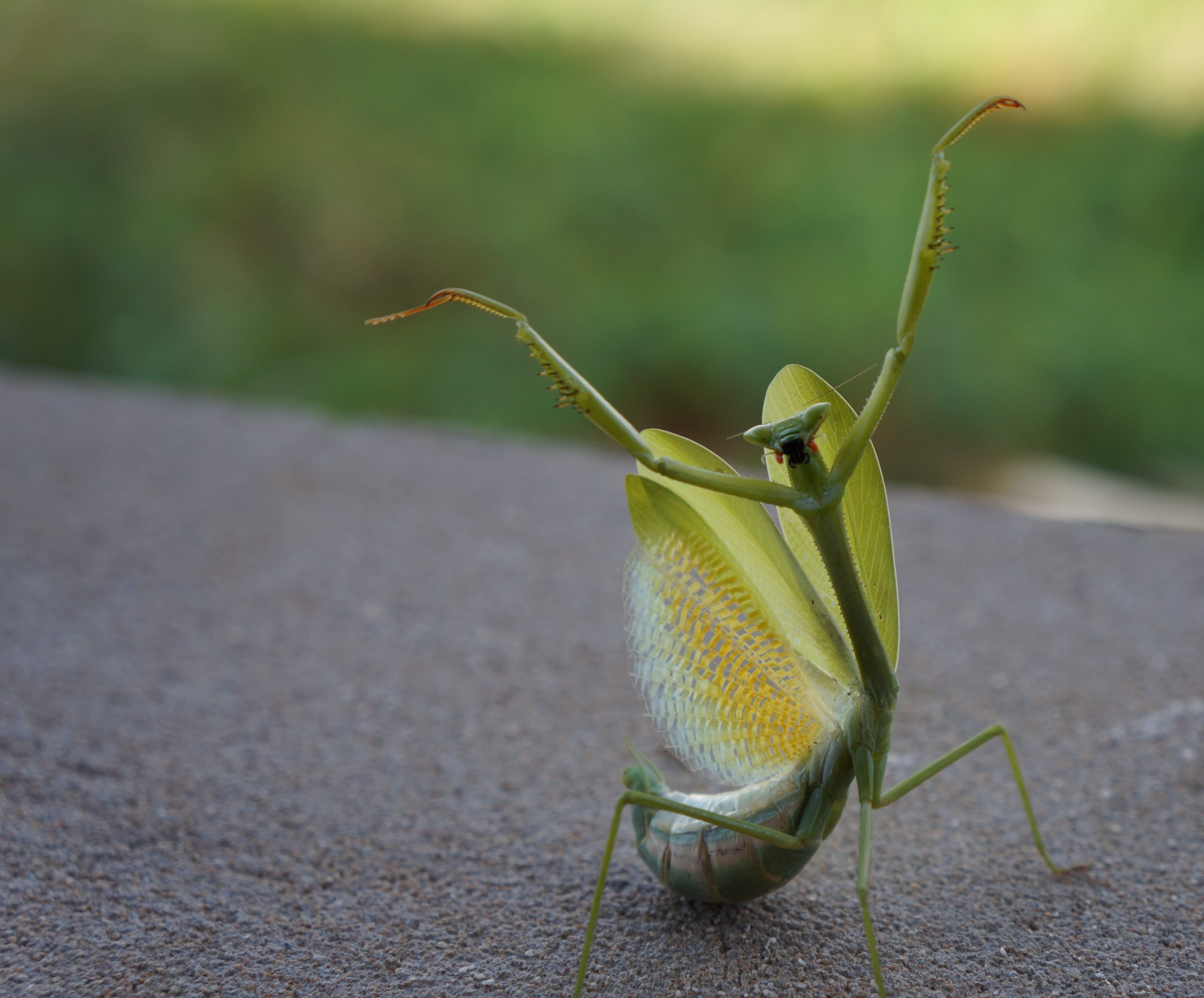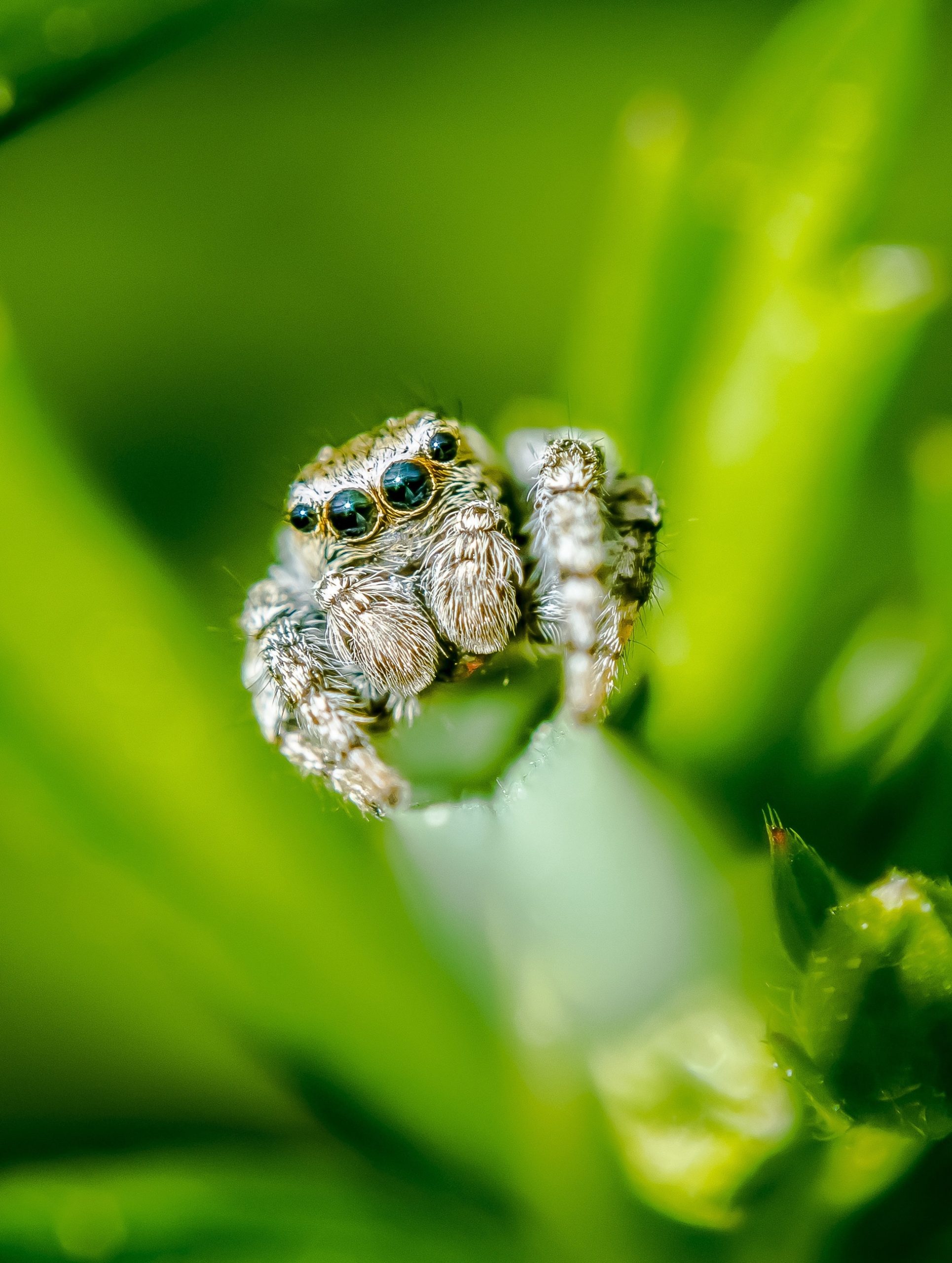Everything you need to know about keeping praying mantises
praying mantis are fascinating insects that are popular among many hobbyists for their unique appearance and interesting behavior. Keeping a Praying Mantis can be an exciting and educational experience. These unique insects are known for their fearsome appearance and deceptively calm demeanor, but behind their impressive camouflage lies a relentless hunter capable of catching its prey with unprecedented precision. Because of their solitary and intriguing lifestyle praying mantis a special attraction for people interested in the fascinating world of insects
If you're interested in keeping these unusual creatures as pets, it's important to know how to properly care for them. In this blog we will tell you everything you need to know about keeping one praying mantis as a pet.
What is a Praying Mantis?
A praying mantis is a species of insect belonging to the order Mantodea. They are striking and fascinating creatures known for their unique appearance and their impressive hunting behavior.
praying mantis have an elongated body, large compound eyes and a triangular head that faces forward, giving them a characteristic 'praying' posture, hence the name “praying mantis".
What makes these insects so special is their extraordinary camouflage and mimicry. They often have excellent body shapes and colors that help them blend in with their surroundings and disguise themselves as branches, leaves, flowers, or even other insects.
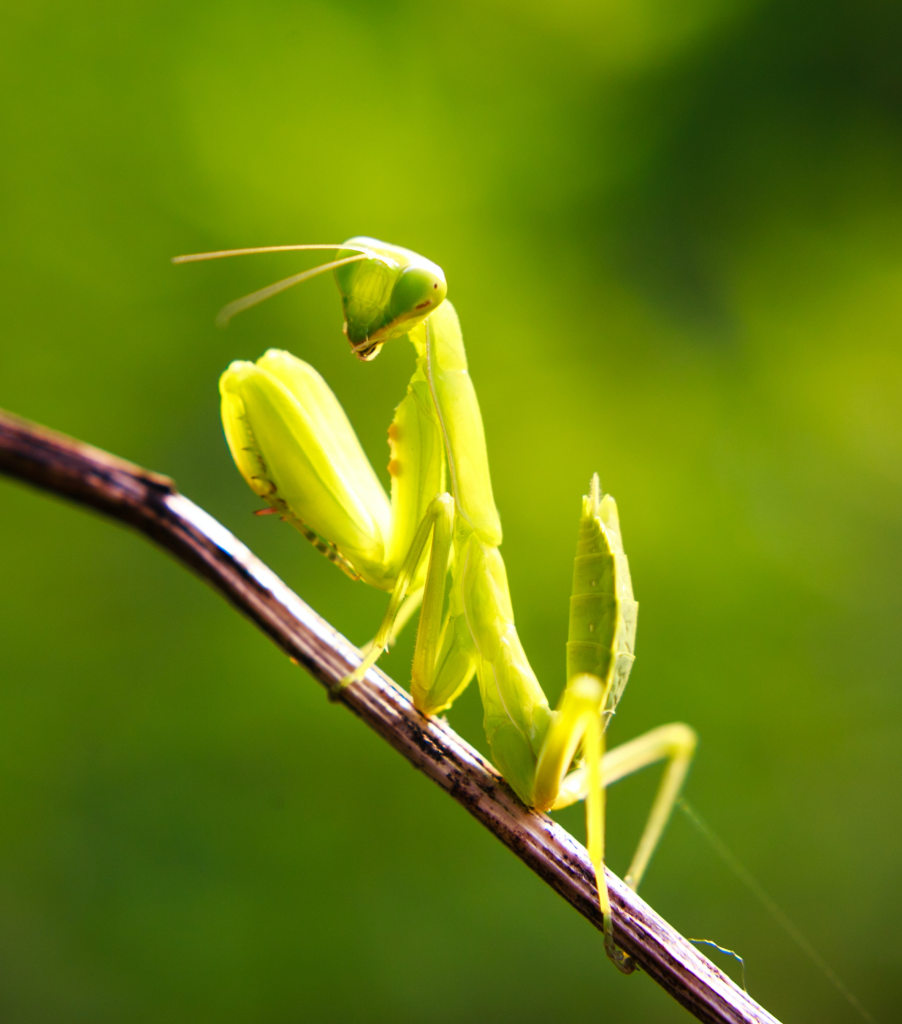
How old does a Praying Mantis get?
The age of praying mantis depends on the species praying mantis. It ranges from a few weeks to up to 10 months in age and females typically outgrow the males.
Young praying mantis are called nymphs, and it usually takes 2 to 3 weeks for a nymph to mature and develop into an adult praying mantis. Once an adult praying mantis several months of life, depending on factors such as temperature and availability of food.
When praying mantises have become adults after 2 to 3 weeks, they still have an average lifespan of a few weeks to a maximum of 10 months. Females continue to outlive males.
Males often live for up to two months beyond maturity, while females can live another three to six months. It is important to be aware that the living environment is healthy, good nutrition and proper care play a crucial role in promoting a long and happy life for your loved one praying mantis.

Growing through Transformation: The Process of Molting in Praying Mantises
Shedding is a delicate and vulnerable stage in a cat's life praying mantis. During molting, they shed their old skin to have room to grow into their larger, adult form. Because of this, molting plays an essential role in a dog's life praying mantisas it is a crucial process for their growth and development. Young praying mantis undergo multiple molts as they grow to adulthood.
Molting is a crucial process in a praying mantis's life, shedding their old skin to make room for growth into their adult form. This stage plays an essential role in their growth and development, and young praying mantises undergo multiple molts as they grow to adulthood.
During molting, they are very sensitive to external influences and are less able to defend themselves. To protect them during molting it is essential that we leave them alone and avoid any disturbances. A calm and safe environment is crucial to ensure that this delicate process can take place undisturbed.
Reach after about 2 to 3 weeks praying mantis maturity, which can be recognized by their developed wings, a characteristic that only mature praying mantis have.
Males typically molt about 6 to 8 times in their lifetime, while females molt 7 to 10 times, depending on the specific species. Each species has its own set number of molts.
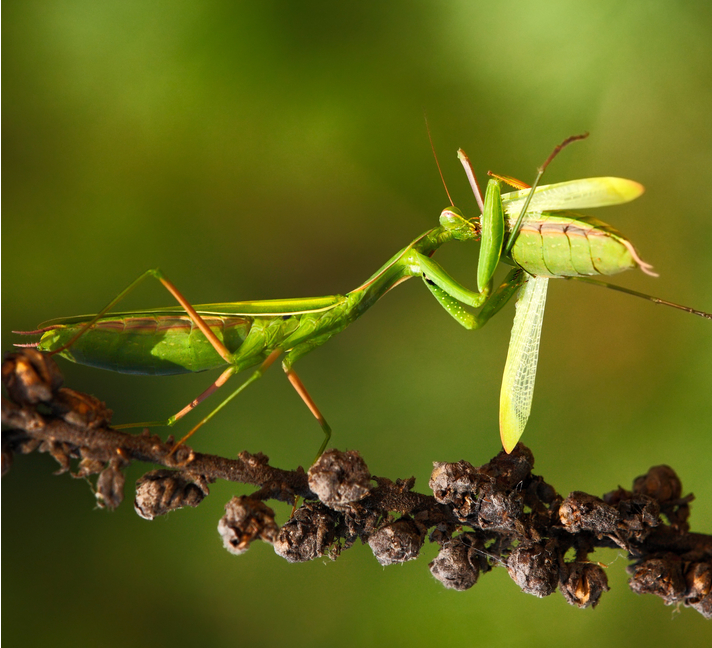
Why Praying Mantises Can't Live Together
praying mantis are solitary animals by nature and should be kept alone.
In the wild would praying mantis only encounter each other during the mating season, but otherwise live separately.
Keeping several together praying mantis can result in aggressive behavior, as they are territorial and may view each other as potential prey.
Food for Praying Mantises: Purebred Carnivores
Nutrition plays an essential role in taking care of praying mantis. praying mantis are true carnivores and in captivity we must feed them with a suitable diet.
As true carnivores, they have a diet consisting of various types of insects. It is important to feed prey that is no more than 1/4th of their body size, such as mealworms, fruit flies, cockroaches and small crickets up to size 3.
Praying mantises are real carnivores and their diet therefore consists of various types of insects. They eat insects such as mealworms, fruit flies, cockroaches and small crickets. Feed your Praying Mantis on average 3 times a week, with prey that is a maximum of 1/4th of their body size.
Feeding you regularly praying mantis is important, but overfeeding should be avoided to prevent health problems. It is recommended to feed about 3 times a week. Make sure your praying mantis Do not overfeed, as overfeeding can be fatal.
Uneaten prey should be removed from the enclosure to avoid disturbance during molting. You also prevent the “prey” from getting your praying mantis mistaken for a potential snack. Enough nutrition and a varied diet are crucial to ensure that you praying mantis thrive and live an active, healthy life.
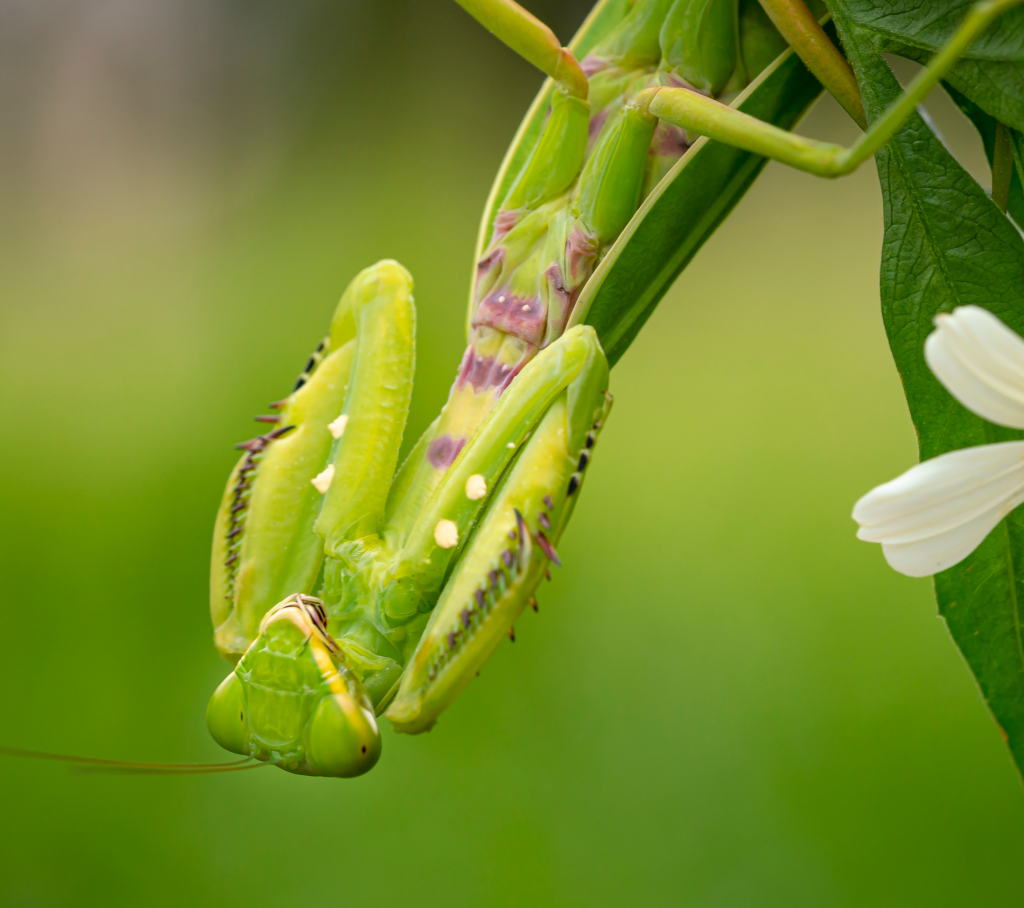
How does a praying mantis drink?
Letting drink praying mantis is a simple but important aspect of their care.
These insects drink from drops water in their habitat, so it is essential to provide them with access to adequate moisture.
Make sure you regularly sprays with a fine mist to make sure there is enough drops lie on leaves or the diamonds in front of you praying mantis to drink.
Choosing the Right Terrarium for your Praying Mantis
Choosing the right thing terrarium for you praying mantis is an important part when you start working on these nice insects. When you choose the right size you can provide a suitable living environment with the ideal conditions for you praying mantis to thrive in.
The right size depends on the species praying mantis that you want to keep. We see that in the most commonly kept species terrarium of 20x20x30cm is sufficient up to a maximum of 30x30x40cm for adults praying mantis. Bigger is better praying mantis Don't worry, a habitat that is too large can prevent them from finding their prey.
As a rule of thumb, we recommend that the mantis terrarium should be at least 3 times the height and the width about 2 times the length of your mantis. This means that if your Praying Mantis is, for example, 10 centimeters long, the terrarium should be at least 30 centimeters high and 20 centimeters wide.
Make sure you have a suitable one terrarium opts for insects, it terrarium must be properly sealed to prevent escape.
A heat lamp can provide the correct temperature range between 22°C and 30°C, while a ground cover as humus or bark bedding retains moisture well to maintain 40-70% humidity. Natural elements such as plant such as Philodendron, the Bromeliad family, Orchids and Ficus provide a natural living environment and provide extra stimulation for your praying mantis. Creating an optimal living environment will result in a happy and healthy one praying mantis who will certainly share your fascination with these intriguing insects.
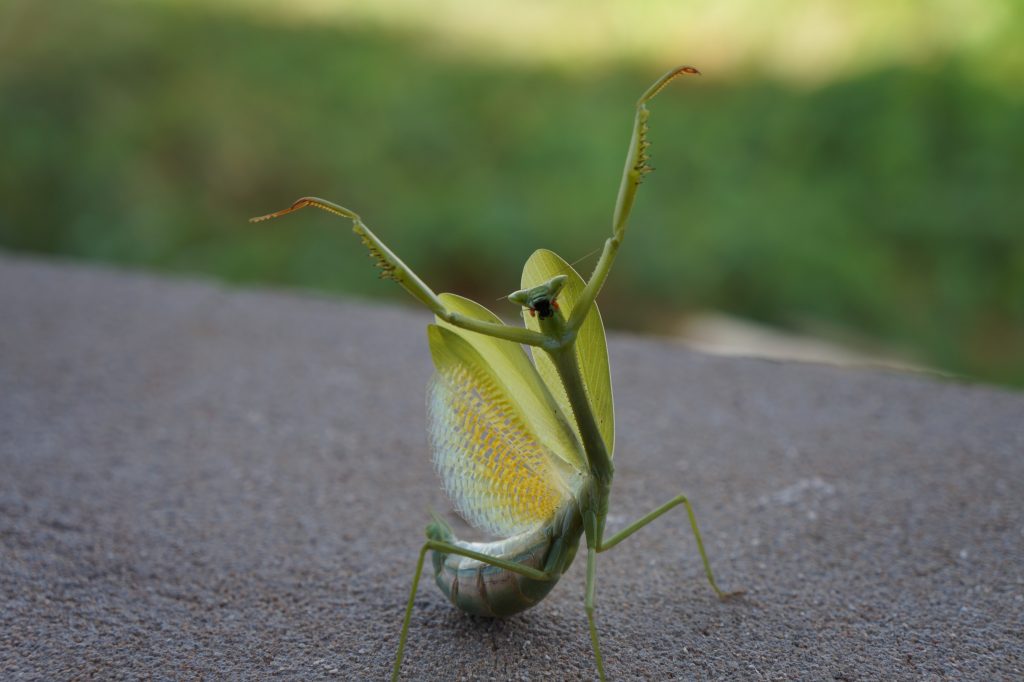
Create the Perfect Living Environment for your Praying Mantis
Creating the ideal living environment for you praying mantis is important to keep him healthy and happy. The exact temperature and humidity depends on the specific species praying mantis.
The most loved praying mantis maintain a temperature between 22°C and 30°C, with a humidity of 40% to 70%. To create these conditions, you can use a heat lamp on the terrarium use to achieve the right temperature and spray regularly with a fine mist to maintain humidity levels.
Create the ideal living environment for your praying mantis: temperatures between 22°C and 30°C, humidity of 40% to 70%. Use a heat lamp and spray regularly for optimal conditions. Choose moisture-retentive bedding and add plants for a natural environment. Use a thermometer and hygrometer to monitor conditions and ensure a healthy and happy praying mantis.
Choose a moisture-retaining one ground cover, like humus of jungle bed, to make it easier to maintain the correct moisture level. In addition, this soil also provides essential nutrients and moisture plant keep in it terrarium.
You can for a natural living environment plant in the terrarium places, such as Philodendron, Bromeliad, Orchids and Ficus, which not only beautify the living environment but also act as a shelter for your praying mantis.
With help from a thermometer en hygrometer can you check the conditions in it terrarium monitor closely and adjust if necessary.
By this measuring equipment to use, you can rest assured that you praying mantis lives in a healthy and comfortable environment in which he can develop and thrive optimally.
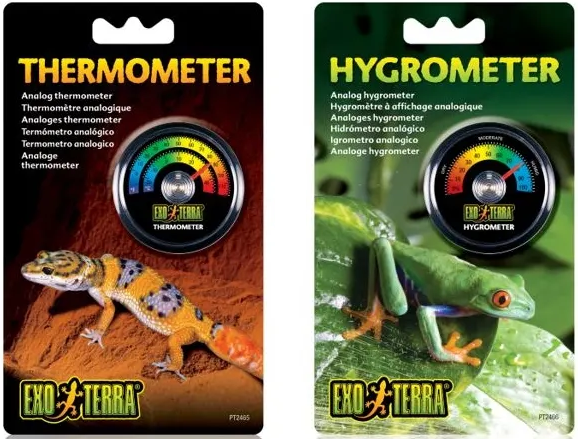
Maintenance of your Praying Mantis Terrarium
Maintenance to you praying mantis terrarium is essential to ensure that your beloved insect has a healthy and clean living environment. Regularly remove faeces and food residues to maintain a hygienic environment. Keep the panes of it terrarium clean so you can praying mantis always good to observe.
Once every 6 to 8 weeks it is recommended to ground cover completely replaceable. Do this gently without you praying mantis to disturb. With regular maintenance you ensure that you praying mantis has a healthy and comfortable environment in which to thrive.
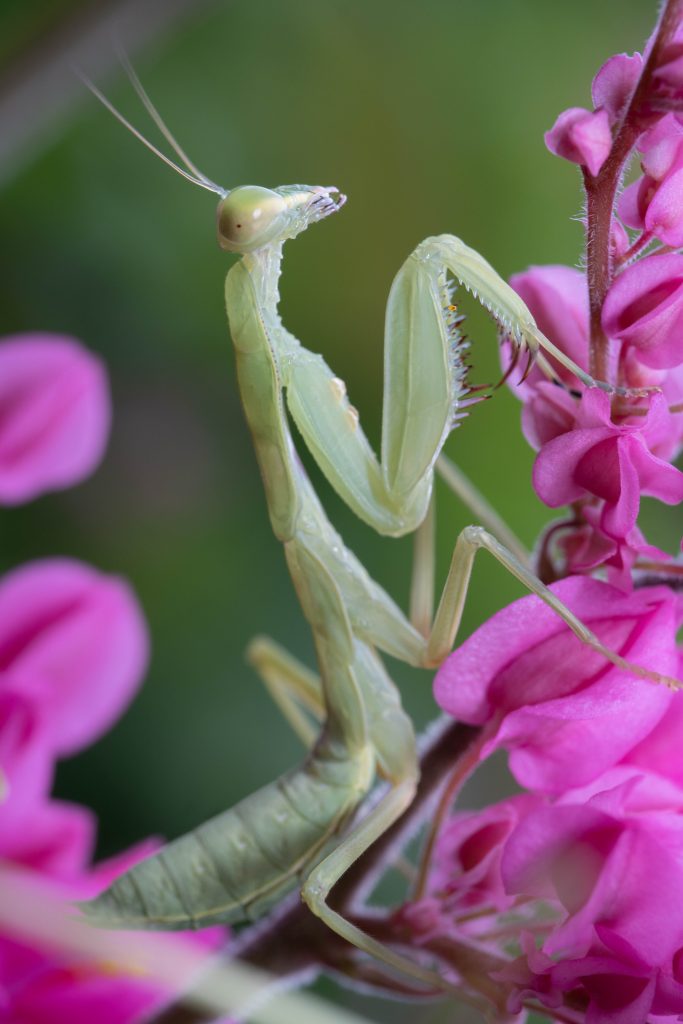
Praying Mantises are Fascinating Watch Animals
praying mantis are show animals and observing their fascinating behavior can be a fun hobby.
It is important to remember that these insects are sensitive to stress and disturbances and they do best in a calm environment.
They are particularly vulnerable during molting and should be left alone.
Try to avoid unnecessary contact and touching as this can cause stress and affect their well-being.
By you praying mantis By approaching them with respect and caution, you create a living environment where they feel comfortable and can behave naturally.
Enjoy observing these special creatures and give them the space they need to thrive in their own unique world.
The loving of praying mantis as pets can be an exciting and unique experience if you understand his needs and his living environment the right way furnish. By paying careful attention to his nutrition, temperature, humidity and other aspects of care, you can ensure that you praying mantis lead a happy and healthy life in captivity. Keep in mind that different types may have specific requirements, so always research the specific type praying mantis that you want to keep.


